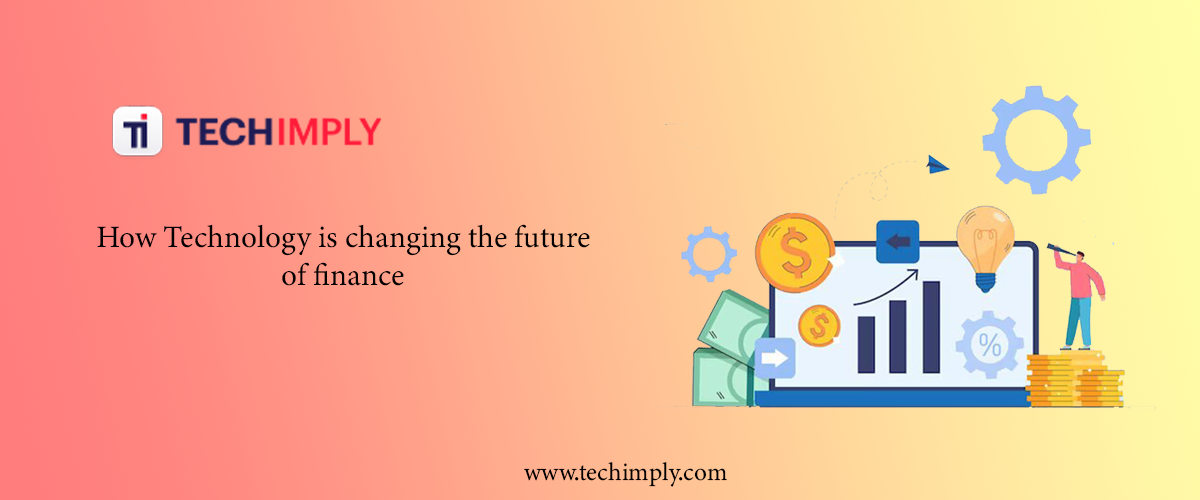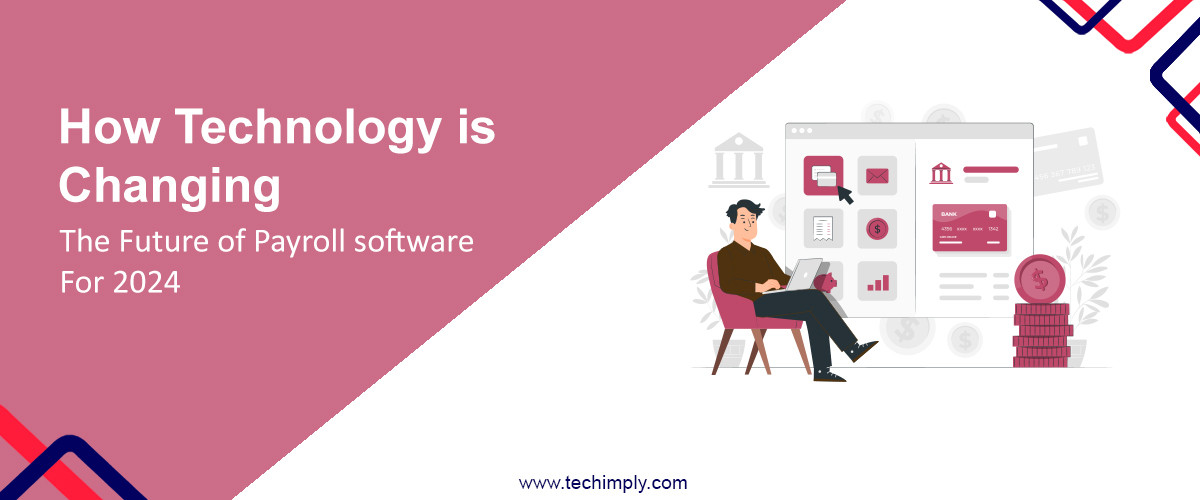The management of money and other assets to achieve financial goals is referred to as finance. This can involve budgeting, saving, investing, borrowing, and lending. It is a field with many different disciplines and practices that is significant for people, companies, and governments.
The term "technology" describes the devices, procedures, and frameworks created to address issues and advance our way of life and employment. It includes various disciplines, including engineering, biology, and information technology.
Along with tangible items like machines and devices, it can also refer to the programs and operating systems executing those things. Technology is a major force behind innovation and advancement since it is always changing and evolving.
The use of technology in the financial sector to increase productivity, lower costs, and improve user experience is referred to as technological innovation in finance. A wide range of technologies, including big data analytics, blockchain, and artificial intelligence software, may be included here.
These technologies have been used in several financial sectors, including asset management, trading, banking, and payments. With the use of technology, new financial products and services have been developed, and those that already exist are now more widely available.
Finance before technology
Before the development of technology, most financial transactions were made in person, paperwork was on paper, and record-keeping was done by hand.
Before technology, finance was done in particular ways, as follows:
- Banking: To deposit or withdraw money, create an account, or submit a loan application, customers would go to a physical bank branch. Additionally, banks would use manual procedures to complete duties like check clearance and account reconciliation.
In investment banks, the investment banking division (IBD) helps governments, corporations, and institutions raise capital and complete various tasks. Therefore, IBD requires people who have chosen an extremely demanding investment banking career where analysts frequently work 100-hour weeks.
Though the salaries in investment banking jobs are rewarding and worth the time dedicated by an analyst, automation of work can make it a lot easier and increase human efficiency.
- Stock trading: Transactions were resolved using paper-based paperwork, such as stock certificates, and stock brokers would purchase and sell stocks over the phone or in person. Today, stock market data API has revolutionized the industry, enabling real-time access to market information and facilitating seamless online trading, making the process more efficient and accessible to a global audience.
- Investment management: Financial advisors meet with clients in person to discuss investments and offer advice based on their knowledge and investigation.
- Record-keeping: Businesses and financial organizations would manually record transactions and other financial data, frequently using ledgers and paper-based documentation.
- Risk management: Manual data and historical record analysis, which took a lot of time and was prone to mistakes, was the major method used to manage risk.
- Fraud detection: Examining financial records manually was the major method used to find fraudulent activity.
Note: The financial sector was generally less productive, labour-intensive, and time-consuming before technology. Technology's rise has resulted in automation, digitization, and easier access to information, which has improved the convenience, effectiveness, and security of the banking sector for both clients and corporations.
Technology and finance
With breakthroughs in fields like automation, digitalization, blockchain, artificial intelligence, and cybersecurity, technology has a big impact on the finance sector.
The following are some concrete examples of how technology is employed in finance:
- Automation: Financial institutions are utilizing technology to automate a number of their procedures, including creating new accounts, approving loans, and spotting fraud. Costs are decreased while efficiency is increased.
For instance, Automated Investment Platforms, such as robo-advisors, use algorithms to manage investments automatically based on a person's risk tolerance and objectives.
- Digital payments: Customers may conduct purchases and manage their accounts using smartphones thanks to digital payments and mobile banking, which are growing in popularity.
Customers can conduct transactions and make purchases online without using cash or credit cards, for instance, using digital payment systems like Apple Pay, Google Wallet, and PayPal.
- Blockchain: The creation of decentralized financial systems, such as cryptocurrencies, that can function without intermediaries like banks is made possible using blockchain technology. Bitcoin and Ethereum are two examples of blockchain-based cryptocurrencies.
- Artificial intelligence: Applications in personal finance software include risk management, fraud detection, and investment management. AI and machine learning are also employed in these areas.
For example, financial institutions utilize machine learning algorithms to identify and stop fraud to examine patterns in financial data.
- Big data and analytics: To process, store, and analyze vast volumes of data, financial institutions are turning to big data and analytics technology. This gives them access to knowledge that they can use to enhance their processes, goods, and services.
- Algorithmic and High-Frequency Trading: Thanks to modern technology, financial institutions can now complete trades in a matter of milliseconds, which has sparked the growth of algorithmic and High-Frequency Trading.
- Online and mobile banking: Thanks to technology, banks can now provide consumers with online and mobile banking services, making it simpler for them to monitor their accounts and complete transactions from any location.Opening an online business bank account like Novo makes managing their business easy because businesses are able to check their incomes and manage them online, thus saving their time.
- Robo-advisory: Automated, algorithm-driven financial planning and investment advice provided to investors through the use of AI and machine learning in wealth management.
- Open banking: The idea of open banking enables outside financial service providers to access client banking information with their permission, perhaps fostering increased competition and financial sector innovation.
- Cybersecurity: As financial services grow more digital, protecting sensitive financial data has become crucial.
Note: The financial industry is being shaped by technology and will probably continue to be shaped by it in the future as new technologies like 5G and quantum computing are developed.
Characteristics of innovators
Innovators claim that "previous performance is not a sign of future investment success," which may also be true of banks' and insurers' track records of outperforming innovators.
The findings of the World Economic Forum paper imply that the major players in the financial services industry may be forced to fundamentally reevaluate their business models due to this phase of innovation.
When it comes to disruptive innovation in financial services, these five traits of today's entrepreneurs hint that things might actually be different this time around:
- They are launching extremely targeted goods and services
Previous innovators frequently attempted to copy the entire bank, which led to business strategies catering to the most tech-savvy or cost-conscious customers.
To "skim the cream" by attacking the most valuable goods of incumbents, today's innovators are actively focusing on the junction of areas of high consumer outrage and high profitability.
Remittances are a bad illustration of this since banks have historically imposed exorbitant costs on international money transfers and provided a subpar customer experience, with transactions frequently taking up to three days to reach their destination.
Transferwise, a firm located in the UK, is upending this procedure by employing a cutting-edge network of bank accounts and an intuitive web interface to make foreign transfers quicker, simpler, and far less expensive.
With the help of this business strategy, the company has lately expanded into the US and currently manages transactions totalling more than £500 million each month.
-
They are automating and commoditizing high-margin processes
Additionally, innovators are automating manual procedures that are currently quite resource-intensive for major players. This enables them to provide services previously only available to the elite to entirely new groups of customers.
For example, asset allocation, investment guidance, and even complex tax minimization methods have all been automated by "robo-advisers" like Wealthfront, FutureAdvisor, and Nutmeg and are now available to users via an online interface.
Customers must forget the personal attention of a professional adviser in person. However, they can still benefit from many of their services at a much lower cost and without having the usual $100,000 in investable assets.
As a result, a whole new group of younger, less wealthy people gets assistance with their saving efforts. It is still unknown, though, if they would ever want to convert to a traditional wealth adviser as their savings increase to the point where they are qualified for one.
-
They are using data strategically
Financial companies have traditionally used customer data as a key aspect of decision-making. For example, banks base lending decisions on your credit score, while insurers may review your driving history or request a physical before providing a policy.
However, as individuals and their devices become increasingly networked, fresh streams of finely detailed, real-time data appear, along with entrepreneurs who use that data to assist in financial decision-making.
For instance, FriendlyScore analyses social networking behaviour in-depth to give lenders another layer of information to consider when determining a borrower's creditworthiness. Does your small business receive a lot of positive feedback from customers and immediately address complaints?
If so, you could be a wise investment. Unfortunately, are all your friends from your social circle "checking in" at the same bar? That can hurt your chances of getting a loan, then.
In the meantime, a new type of insurance firm is figuring out how to produce data streams that aid in better pricing choices and motivate policyholders to make informed choices.
A wearable fitness tracker is something that Oscar, a US-based health insurer, offers its customers without charge. By identifying which policyholders prefer the couch to the gym, Oscar can offer financial incentives (like premium refunds) to entice clients to use the treadmill.
As the complexity of these analytic models and wearable technology increases, we'll probably see an increase in the number of financial services organizations attempting to influence their clients toward better behavior and more responsible risk management.
- They are platform-based and capital light
Uber and Airbnb have demonstrated that marketplace businesses that link customers and sellers may grow profits rapidly while maintaining costs essentially flat. The financial services industry's innovators have taken notice of this tactic.
The two top marketplace lenders in the US, Lending Club and Prosper saw their aggregate originations of consumer loans increase from $871 million in 2012 to $2.4 billion in 2013. In 2014, Lending Club alone made loans totaling $3.5 billion.
The expansion of these platforms is noteworthy, even though this represents a small portion of the $3.2 trillion overall consumer debt in the US as of 2013. By 2025, marketplace lenders will offer $1 trillion in consumer credit globally, according to Foundation Capital analysts.
What's more amazing is that they accomplished this without risking their own money. Instead, they have created a venue where borrowers seeking a higher rate may meet lenders—both private individuals and a variety of organizations like hedge funds—willing to invest their money.
Similar results have been achieved through crowdfunding sites, which have emerged as a significant funding source for numerous startups. These platforms link those interested in small start-up investments with various prospective investment targets and allow the "wisdom of the crowd" to choose which businesses will and won't receive funding.
-
They are collaborating with incumbents
This one could strike you as odd. After all, disruptors are meant to eat the old economy rather than cooperate with it. However, this viewpoint is simplistic.
Aware investors have discovered that they may use split tactics to take on incumbents in the markets they choose while capitalizing on their scale and infrastructure in the markets where they cannot compete.
On the other hand, Incumbents are discovering that working with newcomers can give them a fresh perspective on their business, help them better understand their strategic advantages, and even externalize some of their R&D. As a result, innovators and market leaders are working together more frequently.
The most celebrated financial innovation of the past year, ApplePay, cooperates with existing payment networks like Visa and MasterCard rather than attempting to overthrow them.
Regional banks, such as California's Union Bank, are collaborating strategically with marketplace lenders to send clients they are unwilling to lend to. By doing this, companies can satisfy their customers' needs while reducing the possibility that they will go to a different full-service financial institution.
This story involves more than just disruption. Although it's unclear how it will turn out, we can fairly assert that innovators will pressure market leaders to adapt, ultimately benefiting consumers.
However, it doesn't always follow that well-known brand names will vanish soon. But it doesn't necessarily follow that the well-known brand names will vanish anytime soon, especially if they learn to play along with the newcomers.
Key takeaways
- The finance sector is becoming more efficient and less expensive because of automation and digitization.
- New decentralized financial systems are being developed thanks to blockchain and cryptocurrencies.
- Improvements in risk management, fraud detection, and investment management are being made with the help of artificial intelligence and machine learning.
- As financial services grow more digital, cybersecurity is taking on more significance.
- Big data and analytics gather insights and enhance operations, goods, and services.
- In the financial sector, algorithmic and high-frequency trading are becoming more common.
- Access to financial services is being facilitated for customers through Robo-advisory and online/mobile banking.
- The financial sector is becoming more competitive and innovative due to open banking.
- The financial services industry is seeing new potential for innovation due to technology's expansion of financial inclusion.
Researched and authored by Parul Gupta | LinkedIn


.png)



